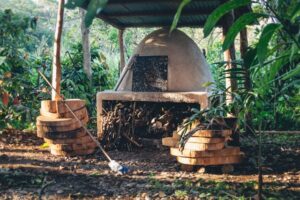Hopkins’ laidback Caribbean charm and vibrant Garifuna culture attract travelers who come here for its picturesque seaside location and to explore Southern Barrier Reef or top jungle attractions.
Many Belizeans are trilingual, speaking not only English and Spanish, but also Kriol and sometimes Mayan or Q’eqchi’ Maya as native tongues.
Languages Spoken in Hopkins
Hopkins Belize has quickly become a favored eco-cultural destination, drawing travelers seeking an idyllic beach base from which to learn about Garifuna culture and explore nearby jungle attractions. Hopkins’ proximity to both the Southern Barrier Reef and nearby national parks makes it ideal for snorkeling, diving, wildlife-spotting, and adventure activities such as birding and kayaking – not forgetting drumming events by Garifuna communities! Guests may even witness cultural performances by local performers in Hopkins Belize!
Belizean English is the main spoken language, yet visitors will encounter a range of other tongues too – Spanish, Mayan and various African tongues are just some examples – creating an eclectic linguistic mix where bilingualism has become widespread – creating few language barriers and creating a dynamic melting pot culture in Belize.
Although most residents in Hopkins speak English, some locals still prefer speaking their native tongue when communicating with tourists and many expats find learning a local tongue useful to connect with its community and better comprehend its culture.
There are various approaches to learning a foreign language, from private tutors and immersion programs to immersion camps and private tuition. But remember, learning takes time – as evidenced by studies conducted at Defense Language Institute – one of the leading language schools in the US which has estimated it takes native speakers on average 26 weeks before reaching fluency.
Before moving to Hopkins Village, expats should familiarize themselves with its currency, laws, and cost of living as well as security precautions like locking their doors and windows and not openly displaying valuables.
As Belize lacks a comprehensive health system, expats should research any healthcare needs they might encounter while living there. Furthermore, travel insurance coverage should also be prioritized; and expats should be willing to embrace local culture and traditions; Belizean hospitality is legendary!
Garifuna
Garifuna (pronounced Gar-ih-foo-nah) is the Caribbean dialect of West African spoken by Carib Indians. This culture-blending fusion brings elements of African and Amerindian cultures together; today its influences can still be felt strongly through food, music, dance and religion.
Garifuna are descendants of Caribs who were defeated by European colonists during the late 17th and early 18th century due to disease and warfare. Later they were assimilated with Arawak peoples of Lesser Antilles and began being known as Garifunas after that.
Today, Garifuna is spoken widely throughout Honduras and Belize as well as New York City. An estimated 22,000 speakers of Garifuna live in Honduras alone while 12,000 reside in Belize. Furthermore, Garifuna people are also famed for their drumming and singing performances which travel worldwide sharing their unique rhythms with audiences.
Hopkins is home to many Garifuna communities who are proud to share their culture with visitors. Through food, drumming and dancing performances as well as jungle tours and other outdoor activities, their traditions are carefully preserved.
One of the key aspects of Garifuna culture is their strong spirituality and faith in a higher power, expressed through ceremonies, music and spiritual healing practices. Additionally, Garifuna people honor and revere their ancestors and consider them their guides in this life.
Although Garifunas are passionate about maintaining their culture, they have expressed worry over its declining numbers. Their concerns include not hearing as many young Garifunas speaking their native language fluently anymore and cultural change gradually taking hold of them. As part of an effort to support younger generations of Garifunas and maintain culture through language acquisition, many locals have donated time volunteering at schools teaching children Garifuna language and culture.
Kriol
Kriol is the official language of Belize and an integral part of their culture. A mix between English, Spanish, and Garifuna dialects, many Belizeans are bilingual in Kriol. Learning a few phrases will allow you to immerse yourself into local life while showing your appreciation for their language and traditions.
Kriol, also known as Creole English or Belizean Creole, is an English creole variant spoken by descendants of African slaves who worked on mahogany camps and logging farms in British Honduras, eventually mixing with Mestizos, Mayas, and East Indians residing there to form Kriol as a distinct mix of cultures and languages. Once stigmatized among its speakers, however, Kriol has seen renewed popularity over recent years.
Belize Creole is considered an informal lingua franca and used by government agencies and schoolchildren for communication, but not within families as a primary language of communication. This may be related to its association with colonialism and illiterate communities or simply due to pidgins/creoles’ connection with less powerful groups such as slaves/indentured workers etc.
This article draws upon ethnographic interview data to examine language ideologies in a village in Belize. The analysis finds that concepts of “proper English” relate to an idealized concept of formal and regular speech with clear links to tangible materiality (like books). Conversely, discourses on Kriol often invoke another concept of prestige based on orality, individual appropriation and verbal art – leading the study to conclude that valorizing non-local ‘proper English” and non-standardized Kriol impacts paths towards endogenous normativity.
English
Belize offers an abundance of variations when it comes to English. Although English is the official language and taught in schools and used during legal proceedings, many Belizeans also employ Kriol, an eclectic creole patois that blends English with Caribbean and African dialects – 4 percent of population speak this form.
Migration patterns have had an immense effect on Belize as other parts of Central America. Lebanese dialects and the archaic German dialect Plautdietsch used by Mennonites make up part of an ever-evolving immigrant community that brings diverse people, cultures, and languages (Cox, Driedger & Tucker 2013; Medina 2003; Thompson 2004).
Hopkins may boast beautiful beaches, jungles and reefs but the real draw of Hopkins may lie with its remarkable people. North Americans can learn about their heritage when taking a visit to Plymouth Rock; in Belize villagers offer even more insight.
Garifuna culture was formed when African refugees from a ship which capsized off of Jamaica made landfall here and were warmly received as refugees, intermarriage was soon common, and intermarriage soon followed suit – becoming part of Garifuna culture itself. Villagers are still very welcoming of visitors, sharing music, dance, cuisine and culture freely with anyone interested in visiting them.
Planning a trip to Hopkins requires keeping in mind that Belize is an informal country with a casual lifestyle, so be sure to bring loose-fitting shorts and T-shirts, bathing suit and comfortable shoes for walking around town or exploring its gorgeous rain forests. Also keep a cap handy to shield your head from tropical sun rays as well as light jacket.




